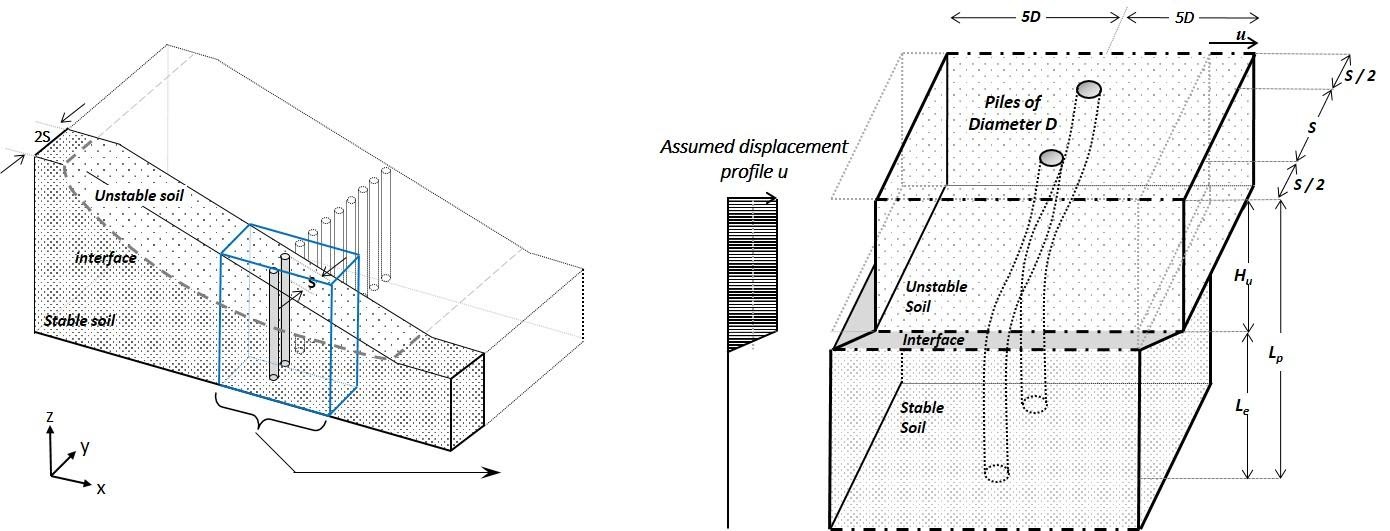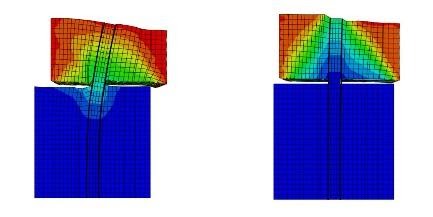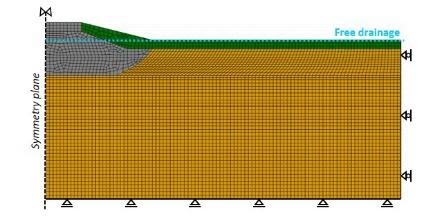Coping with Climate Change
The efforts for sustainable geotechnical construction and the contributions to renewable energy aim at tackling the causes of climate change and reducing its extent. However, some of its consequences may be inevitable, calling for appropriate adaptation measures.
Among such possibly inevitable consequences, extreme precipitation events are likely to become increasingly common with the rise of temperature, leading to a major increase of landslides. The latter can be particularly disruptive to modern societies, as they have the potential of unbearable economic losses, let alone casualties. In this respect, our work contributes to the development of countermeasures for potentially unstable slopes, focusing on slope stabilizing piles and pilegroups (external page J31, external page J38). Combining the accuracy of rigorous 3D FE simulation with the simplicity of widely accepted analytical techniques, we developed a hybrid method for designing slope-stabilizing piles. The developed method allows estimation of the optimum pile configuration for a prescribed deformation level. Using the developed hybrid method, we showed that 4 pile diameters is the optimum pile spacing, and explored the efficiency of capped pilegroups for stabilizing deep landslides. Although it mainly focused on earthquake-triggered landslides, our work on the interaction of foundation−structure systems with precarious slopes is also of immediate relevance (external page J29).

A second possibly inevitable consequence of climate change is thawing of permafrost. Besides the possible release of enormous amounts of greenhouse gases, thawing weakens the frozen soil that supports buildings and lifelines in many areas around the world, from Siberia to Alaska. Our work focused on the development of a reasonably accurate computational tool for the analysis of structures on degrading permafrost, allowing modelling of complex 3D geometries and boundary and loading conditions (external page J88). Our simplified sequentially coupled numerical approach can be implemented in general purpose FE analysis codes. The method permits simulation of the temperature-dependent thermal and mechanical properties of soils in an approximate manner.

Selected recent publications

Kourkoulis R., Gelagoti F., Anastasopoulos I., Gazetas G. (2011). “Slope Stabilizing Piles and Pile-Groups: Parametric Study and Design Insights,” Journal of Geotechnical and Geoenvironmental Enginering, 137(7): 663-677 (external page J31)

Loli M., Tsatsis A., Kourkoulis R., Anastasopoulos I. (2020). “A simplified numerical method to simulate the thawing of frozen soil,” Proceedings of the Institution of Civil Engineers–Geotechnical Engineering, 173(5): 408–427 (external page J88)